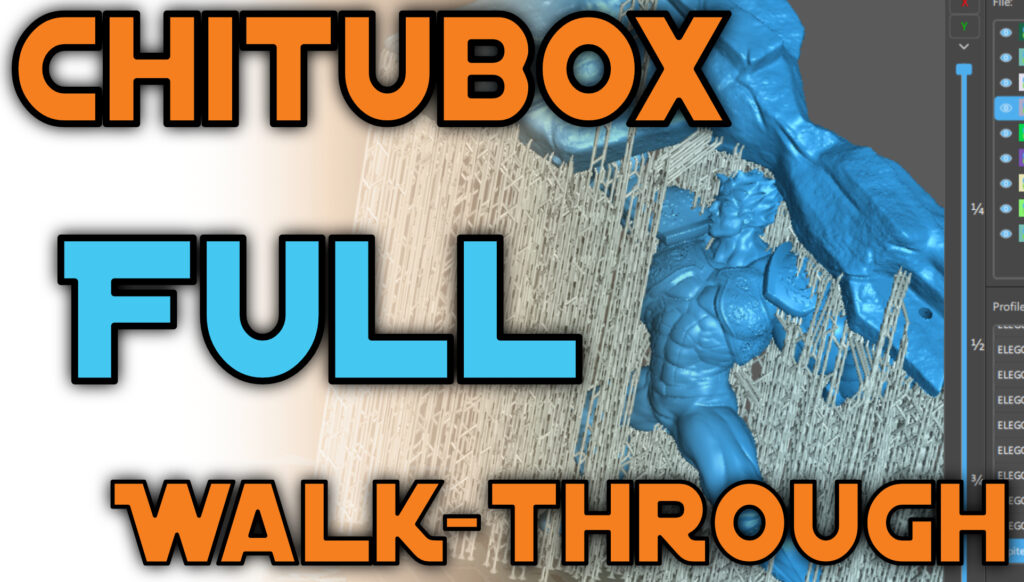Ender 3 V2 – Z-Axis Upgrade
Installation
In this article, we’ll be updating the Ender 3 V2 by Creality to have two Z axis motors. I purchased this upgrade kit specifically for this video, so no money has exchanged hands. I’m in no way responsible if any damages may occur, so do this at your own risk.
In most cases this modification won’t really add all that much to the existing machine unless you intend to upgrade the hot end to a direct extruder. Since the X gantry can be easily moved when additional weight is applied, this should prevent any issues with the extruder falling downwards during a print. This solution isn’t perfect, however, since the gantry can become un-levelled over time, so regular maintenance will be required to prevent any issues.
As a precautionary measure, I do recommend that you add something below the X gantry to keep the hot end from crashing into the build plate. In my case, I used the packaging that came with the kit. To begin, we first need to remove the lead screw bracket on the right-hand side of the machine. You’ll remove the two screws holding the bracket to the X gantry, followed by the two outside pulley wheels. We can then slide out the bracket to add the additional hardware. In my case, I decide to also upgrade the pulley wheels to polycarbonate ones at the same time. In order to add the additional bracket, we’ll also have to swap out the screws along with adding additional spacers. Without these spacers, the plate will offset the alignment and cause it to grind against the extrusion. It’s important to first assemble the portion which holds the eccentric nut, and keep this loose to begin with. After re-inserting and adding the second wheel, we can re-tighten the eccentric nut through the hole that’s in the extrusion. In order to fit the re-assembled bracket into place, the eccentric nut will need to be rotated until the screw hole matches up with the extrusion hole. Once all the wheels are in place, we can then adjust the eccentric nut to make sure that there’s even pressure along all the wheels. There are two screws which hold the bracket onto the X carriage and these can now be attached. For the screw that’s holding the belt tensioner, it’s easier to put it into place if you first remove the adjacent screw, since they both share the same threads.
The next stage is to add the new stepper motor, and for this we’ll use the provided bracket that came with the kit and attach this to the new stepper motor. With this installed, we’ll then add the two T slot nut and attach these to the frame. It’s very important to turn these upwards before installing them and check to make sure that they rotate so that they’re locked into place. Taking the coupler, we’ll install this so that it’s slightly raised up, ensuring that the shaft is at the centre mark. We can then tighten the screws on the bracket, which helps align the lead screw. By turning the lead screw, we can put this in place and secure it to the coupler. Before installing the lead screw support, you’ll want to add the T-slot nuts that’ll hold the support into place. Once again, make sure that these are properly secured.
To install the wiring, we’ll first unplug the connector for the left Z motor and attach this to the splitter connection. We’ll then connect the shorter wire to the left Z motor, followed by the right side. It’s very important that you properly tie back the wiring to make sure that the build plate will not dislodge the wiring during movement. As you can see, I used some Zip ties to achieve this, but I would upgrade this to a cable guide if possible. In my case, I chose this model, that you can pick up here.
With everything installed, it’s now time to align all the components. We’ll start off by checking that the lead screw bracket wheels are moving properly. You can check this by trying to rotate the wheels individually and making sure that they can still move with a medium amount of pressure. You can then turn on the machine and home to the bed, followed by turning off the stepper motors. Likewise, you’ll then manually move the hot end slowly to the right-hand side so that you can manually rotate the right-hand side Z motor. We’ll then re-home the machine and do a full bed levelling to ensure that there’s proper contact to the build plate. In my case I used my custom levelling file, however there’s multiple one’s available that you can use online.
With everything complete, it’s now time to do a full test print and unsurprisingly, there wasn’t really any difference since we haven’t upgraded the hot end yet. With the new Z axis installed, we’ll be able to upgrade the hot end to a direct drive extruder in the next article.
Private Notes
When to Upgrade to a Dual Z Axis
- Are you adding a Direct Drive Extruder?
- Has your Z-axis been slipping?
When Choosing a Kit
When choosing your kit, make sure that you have the following.
- Z motor splitter cable
- Lead screw holder
- Z Motor + coupler + stepper motor holder
- Lead screw mount
Yasmeen completed both the 2D and 3D animation course at Algonquin College and worked in the animation industry as a freelancer for a number of years before being hired to manage the 3D printing services at ItsYeBoi. While using the Alias of "Jenny" during her services, she was responsible for the testing, maintenance and upgrading of the machine while also filming and developing 3D printable assets for various projects.

